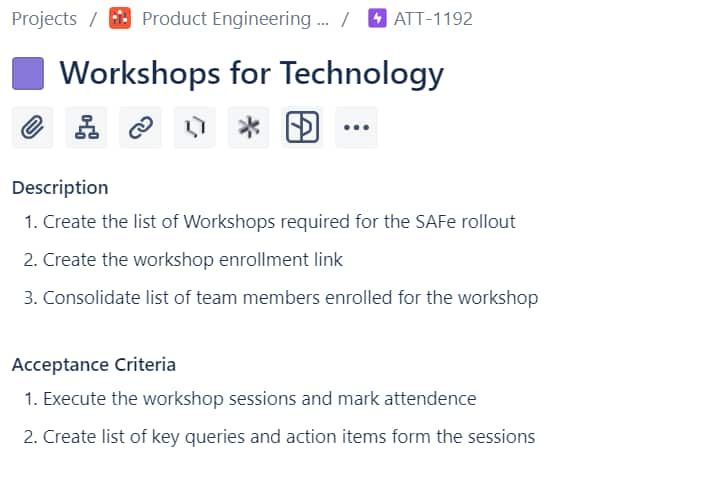Definition
An Epic represents functionality that delivers business value, fulfills a stakeholder need, and is sized or split adequately to be delivered by an Agile Release Train within a PI. Each Epic should include a benefit hypothesis and acceptance criteria.
Epics are maintained in the ART Backlog. They can originate from within the Agile Release Train’s local context or from splitting Initiatives or larger capabilities.
Epics progress through a well defined Backlog Management process.
Key points to remember
Responsible for creating Epics- Product Manager/Owner
Size - Epics span one PI, taking 1 to 5 sprints
Responsible for implementing - can span multiple Agile Squads under the same POD
Key fields to be updated(* indicates mandatory fields)
Status* as per the workflow- Jira Board Structure & Workflow | Epic board & Jira workflow
Assignee* - Product Owner/Manager
Tshirt Size* - Backlog Structure and Refinement | ART Backlog
Start date* - Tentative start date
Due Date* - Tentative end date
Value Points* - Business Value collected after refining with Business Stakeholders
Priority* - Based on the value points (Critical, Major, Minor, Trivial)
Parent Link - In case there is a Portfolio Backlog, then link the parent Initiative to the epic
Component - Create components for better filter and tracking purpose
Definition of Done for Epics- The DoD criteria is something the Product Manager, Product Owner and other team leads will agree on in collaboration with the Agile Teams. Epic DOD example:
Acceptance criteria met
Integrated into a clean build
Promoted to higher level environment
Automated regression tests pass
Epic level functional tests passed
Non-Functional requirements met
Meets compliance requirements
Functionality documented in necessary user documentation





